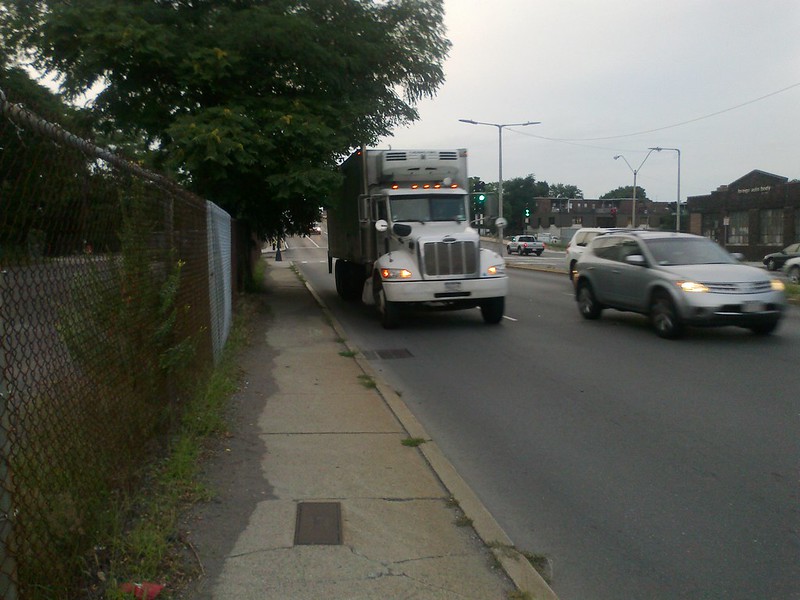 |
| Cambridge Street in North Allston |
Most of the roads and streets in our cities are built to reflect a set of priorities which date to an era when automobiles were expected to take over every transportation need. These priorities were not and are not appropriate, especially now that we have realized that they lead to the destruction of cities by hollowing them out from the inside. Cars can be useful when necessary, but we must realign our priorities when building and renovating city streets to reflect the needs of the people who live, work and play in close proximity there.
The old priorities might be boiled down to this ordering:
- Emergency vehicles (unless congested by #2 and #3)
- Private vehicles
- Commercial vehicles
- Transit vehicles
- Bicycling
- Walking
- Emergency vehicles
- Walking
- Bicycling
- Transit vehicles
- Light commercial vehicles
- Private vehicles
- Heavy commercial vehicles
I place transit vehicles before the other vehicles because transit is the most space efficient way of providing transportation to people. An assurance of reliability means that people will be more inclined to use it, and less inclined to fall back on private vehicles which are extremely inefficient in their demands on scarce city land. A transit system should be thought of as "walking enhancement:" the primary mode of its customers is walking, and transit makes them even more mobile. The aim is to reduce the number of instances that force people into their cars when they would rather be walking. Some trips will always require cars, and that's fine. But when a person is forced to mode-shift a walking trip into a driving trip, that's a net negative for the city, and perhaps even a failure of its transportation system.
Finally, I split up the category of commercial vehicles into "light" and "heavy." The reason for this is that "light" or city-appropriate commercial vehicles can do work and deliveries which are critical to economic functioning without imposing too heavy a cost on everyone else. In fact, I feel that they are more important to the economy than the typical private vehicle. For example, this conflict comes up when trying to divide up limited space between loading zones and parking spots. I also think that it is in the interest of cities to find ways to motivate businesses into using more city-appropriate trucks. I place "heavy" commercial vehicles last because they impose such heavy burdens on safety and maintenance expenses. The wide turning radii of 5-axle trucks makes them unwieldy on small city streets. But widening the streets to accommodate large trucks makes the streets unsafe for walking. Also, the heavy weight of these trucks does by far the most damage to the streets. All the other users of the streets essentially subsidize the repair of this damage. So it is only fair for the city to put some constraints on how heavy vehicles move around and use the streets for safety and minimal damage.
Private vehicles should be permitted on almost all streets. But they should not dominate the users of the street. Decades ago, public streets were considered to be part of the open, common space in the city, available for all people to use even if they were not contained in a vehicle. Slowly that was changed into the current situation where streets can make up 50% of the landscape even while residents clamor for more open space. The streets have been totally given over to vehicular use, for long enough, to the point that people cannot even imagine any other possibility. It will take time to shift back to the more traditional notions of city streets which are shared, and city squares which are more than just nasty, congested intersections. But hopefully, not too long.




